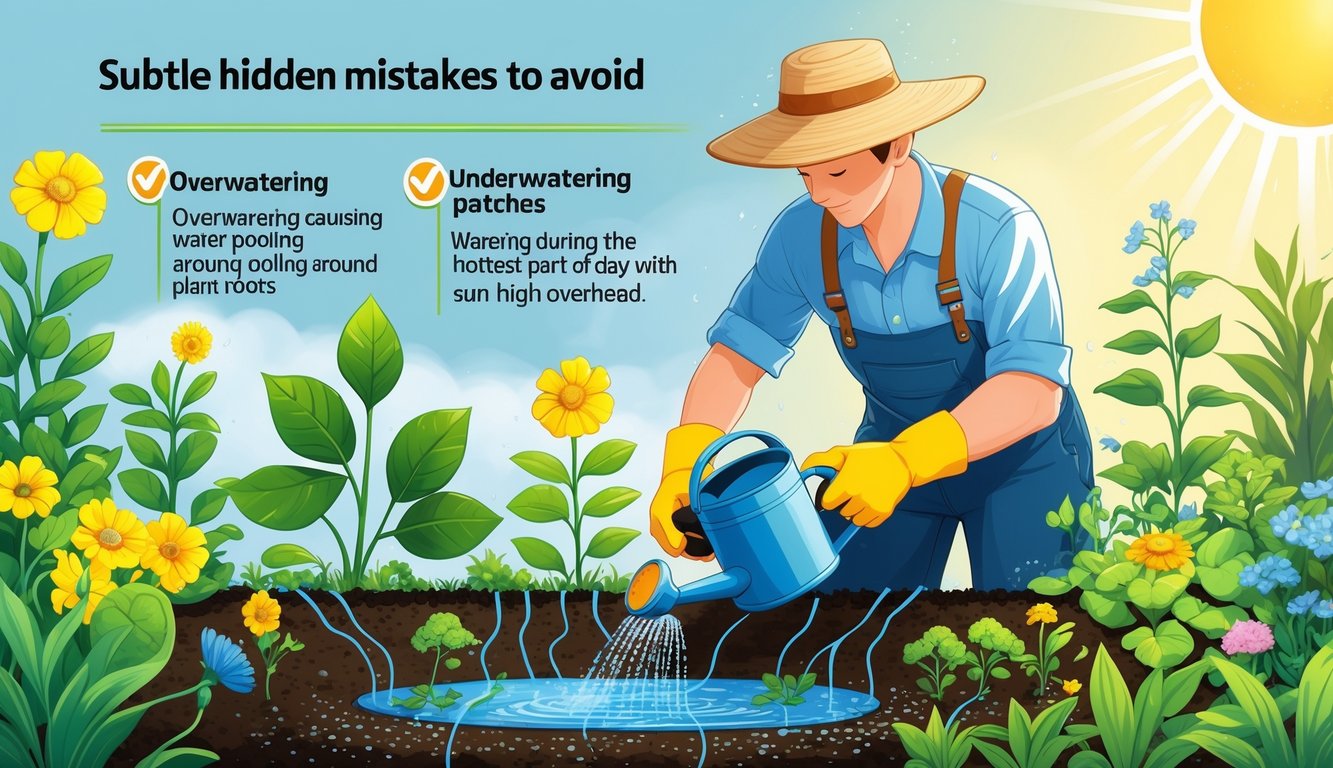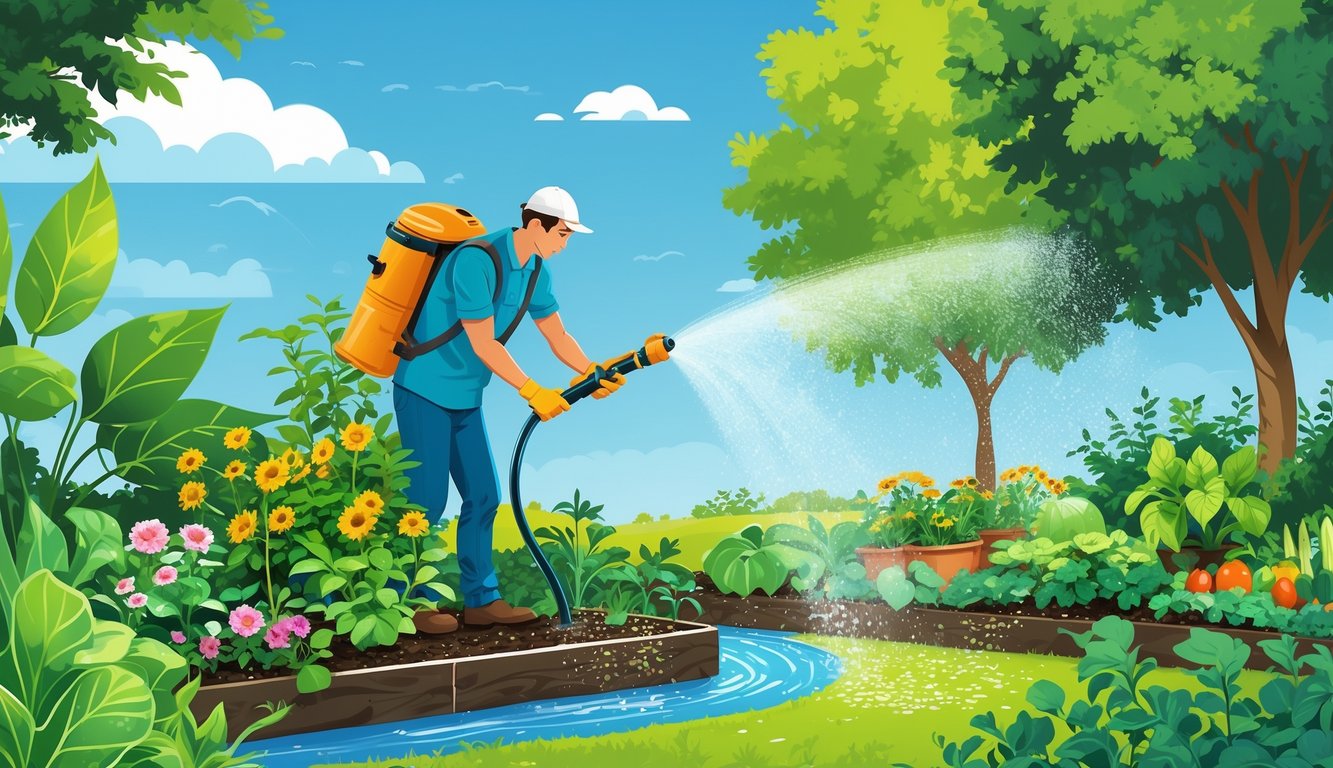
Perfecting Your Watering Routine
And seriously, how do even the “experts” make watering sound like rocket science? I’ve tried every gadget, timer, and even scribbled schedules on the fridge—none of it survives past week three. Forget “perfect” growth. If your tomatoes are dying, don’t blame the hose brand.
Setting an Optimal Watering Schedule
Someone always preaches “every other day at dawn,” but my dog’s up at five and I’m not. Plants couldn’t care less about your calendar. If you want any consistency, you have to balance overwatering and those sad, floppy leaves. NASA tracks soil moisture from space, but me? I just poke the dirt. If it sticks, I wait. If it’s dry, I water.
Here’s what nobody admits: most beginners just blast water on top and bail. Waste of time. Morning is best—wait until noon and you lose a third to evaporation (UC Master Gardeners say so). A soaker hose beats sprinklers, keeps leaves dry, and roots go deeper. Want even growth? Ignore your neighbor’s routine—microclimates are real, and shady spots stay moist way longer than sunny ones. Epic Gardening says “irrigation isn’t rocket science,” but if you trust someone else’s schedule, you’re asking for fungus.
Adapting Watering Frequency to the Seasons
Last July, I totally forgot that new mulch dries out beds faster. My phone’s watering map made less sense than IKEA instructions—plants begged for water by the third heatwave. Frequency? It’s chaos. You can’t water the same in June and September unless you like sad leaves and starting over.
What actually helps: I use a cheap moisture meter (doesn’t matter which, they all break, but it’s worth $10 for a season) and check weather apps for rain stats. Plants get thirsty on windy days, not just hot ones. Every expert says seasonal shifts matter more than any “rule.” Outdoor Guide keeps repeating: the biggest mistakes show up mid-summer (see here). No such thing as “set it and forget it”—you have to keep tweaking. Sometimes the best routine gets wrecked by a cold snap or random humidity and, boom, fungus gnats everywhere.
Advanced Watering Techniques Pros Use

And, yeah, not one neighbor ever explained why my zinnias flopped while theirs looked like they’d hit the plant lottery. Roots never lie, and neither do my dry, cracked hands after wrangling irrigation timers all summer. Let’s be real—pros use tricks nobody talks about, and it’s never just dumping water out of a can.
Deep Watering for Healthy Roots
So, deep watering. Honestly, I didn’t even think about it until someone pointed out that all my plants’ roots were just chilling right at the surface, because I’d been hitting them with those quick daily sprinkles. I mean, who knew? Apparently, if you only wet the top inch, the roots just give up on going deeper—like, why would they bother? Real gardeners (or people who just pretend to know things on the internet) swear by soaking the soil down 12 to 18 inches. Not my random guess—there are actual studies, and this guide basically says the same thing.
Ever tried jamming a screwdriver into the ground after one of those marathon soakings? Kind of weirdly satisfying to hit damp soil all the way down, especially when the top is already dry again. Watering for five minutes every day? Total waste. Once or twice a week, slow and steady, makes way more sense. I do wonder if plants get bored waiting for that slow trickle—do they even notice?—but every time I slack off and let the roots get shallow, it’s like summer disaster mode. Deep roots, less drama, apparently.
Efficient Watering With Drip Irrigation and Soaker Hoses
Drip irrigation. Look, I’m lazy, and the idea of dragging hoses around every morning or evening? No thanks. I finally caved and set up a basic drip kit—just some half-inch tubing, cheap little emitters, and a timer that’s always threatening to die. I tossed a couple soaker hoses through the veggie beds, too. It’s not fancy, but suddenly water goes exactly where it’s supposed to, slow and boring, usually before sunrise so nothing evaporates. I used to lose entire beds to random hand-sprinkling and hot wind. Not anymore.
Measuring how long it takes for water to actually soak in? Huge difference. My water bill dropped. Root rot? Barely a thing now. Laying soaker hoses under mulch keeps everything damp without blasting the leaves—no more crispy foliage or wasted effort. Overhead watering just feels wrong now. I don’t get why people still defend it. Roots want a gentle, steady drink, not a hurricane.
Using Rain Gauge and Rainwater Harvesting Tools
Why did nobody ever give me a rain gauge? Would’ve saved me so much pointless watering. Stick one in the garden and suddenly you’re not just guessing if last night’s rainstorm actually did anything. Most plants want about an inch a week, but the gauge sometimes lies if the wind’s weird or it’s angled wrong, so I double-check.
That YouTube guy with barrels under every gutter? Okay, he’s onto something. Rainwater harvesting is actually awesome—less chemical junk, and my basil looks way better after a few weeks on the rainwater diet. Some states have these weird rules (why?) so maybe don’t just start rolling barrels out front. I hooked mine up with mesh filters and overflow pipes, so fewer mosquitoes and, weirdly, more consistent growth even when it hasn’t rained in ages. Rainwater plus a gauge beats my memory every single time.